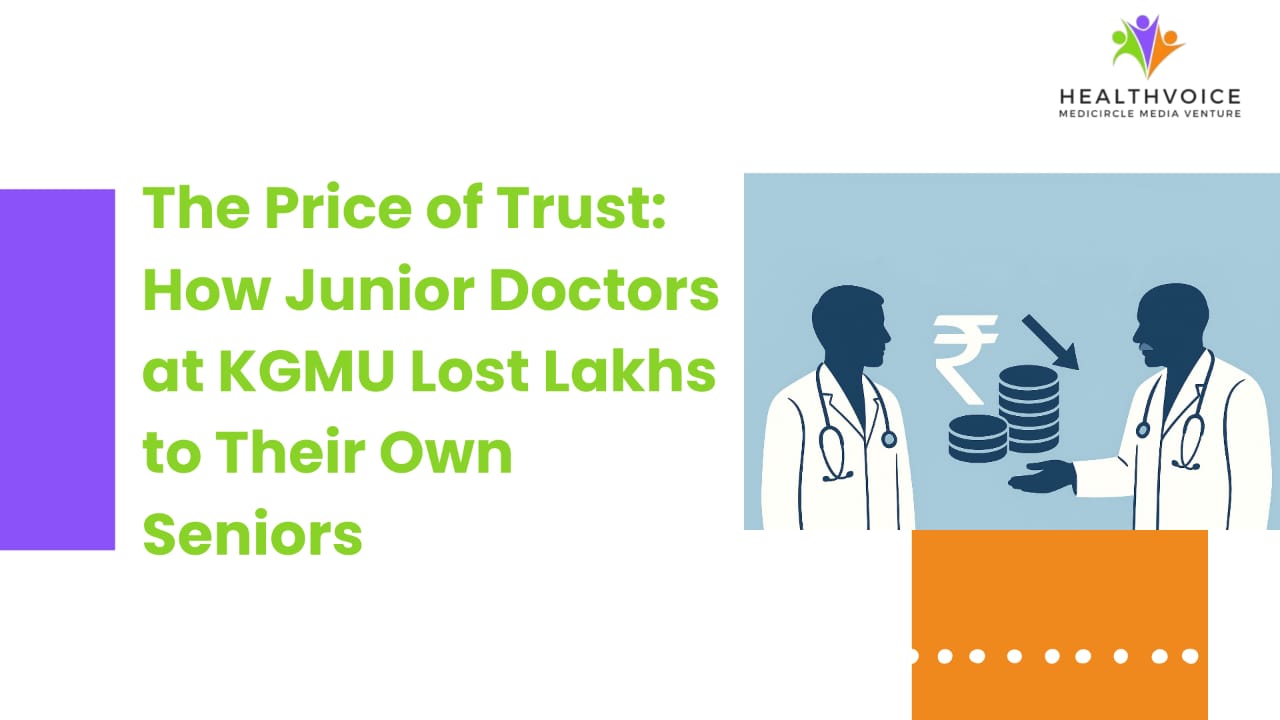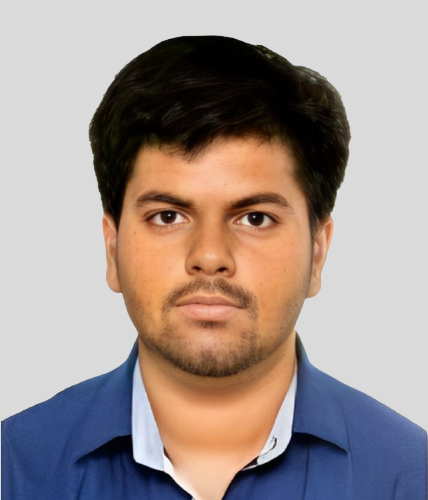The Price of Trust: How Junior Doctors at KGMU Lost Lakhs to Their Own Seniors
When those who heal fall prey to, or become agents of, financial exploitation, the consequences reverberate far beyond balance sheets. They touch the very soul of a profession built on trust.

The white coat has long stood as a symbol of trust, knowledge, and compassion. It represents the promise that doctors hold lives above all else, that integrity flows through their profession like blood through veins. Yet the very corridors of King George’s Medical University (KGMU), one of Uttar Pradesh’s most reputed institutions, have now witnessed a troubling story of misplaced faith, financial deceit, and betrayal from within. Doctors, who devote their lives to healing others, now find themselves nursing wounds of another kind, inflicted by colleagues who allegedly lured them into a fraudulent financial scheme.
What makes this story more than just another scam is the identity of both the victims and the alleged perpetrators. Junior residents, still in training and vulnerable in the hierarchy of medicine, say they were persuaded, pressured, and even intimidated by their senior peers into investing lakhs of rupees in a company called Green by Veda. The promise was irresistible on the surface: high returns, safe investments, and documents that appeared legitimate. But beneath that glittering promise was a network that police investigations now suggest bore the hallmarks of a pyramid scheme.
Take the case of Dr. Mohammad Amir Husain, who recalls how the trap was set in a seemingly harmless way with a friendly conversation among colleagues about investment opportunities. What began as casual chatter soon became persistent persuasion. Trust played a dangerous role here; the white coat was weaponized as a tool of confidence-building. Dr. Husain says he was shown papers, photographs, and convincing narratives that left little room for doubt. He invested ₹7 lakh, a significant sum for a young doctor still mapping out his career. But when he later sought his returns, he says the masks fell off. Instead of professionalism, he was met with threats of false lawsuits, reminders that his medical career could be destroyed if he dared to resist.
He was not alone. Dr. Ayush Singh, who invested over ₹6 lakh, tells a parallel story. So does Dr. Anant Khan, who parted with nearly ₹7 lakh, and Dr. Ashish Kumar from Varanasi, who invested around ₹3 lakh. Their experiences echo the same troubling pattern of persuasion rooted in trust, promises of quick profits, and eventually, intimidation once questions were raised. In every case, the initial appeal was not financial brilliance but relational leverage. These were not outsiders but colleagues, peers in the same hallowed halls of KGMU, which made the pitch hard to refuse.
At the centre of the allegations is Dr. Ajay Kumar Verma, a senior resident in the Department of Anatomy, and his wife. Police complaints describe how the couple allegedly exploited their professional stature to draw juniors into the scheme, sometimes pushing them to introduce more investors to keep the cycle alive. This, investigators suggest, mirrors the classic pyramid model: money from fresh investors being used to sustain the illusion of returns for earlier participants. Once the chain weakens, the structure collapses, leaving most with losses.
Charges of fraud, criminal conspiracy, and intimidation have been registered. But the legal process in India, especially in financial crimes, is notoriously slow and complex. Evidence must be watertight, and intimidation often silences victims. For young doctors still carving out their professional future, the risk of public conflict with seniors can be daunting. The possibility of retaliation be it in academic grading, postings, or subtle professional isolation remains a chilling fear.
Yet beyond legality lies the ethical rot that this case exposes. Medicine, perhaps more than any other field, is built on mentorship. Seniors guide juniors, shaping not just their medical skills but their professional values. When that sacred bond is exploited for personal gain, the betrayal cuts deeper than money lost. It corrodes trust in the very ecosystem that sustains medical education. If young doctors begin to view their seniors not as guides but as potential predators, the result could be devastating. Professional solidarity fractures, and the culture of learning that medicine thrives upon begins to erode.
Systemically, the scandal raises bigger questions about the environment in which such schemes take root. Why was it so easy for a fraudulent financial network to spread in one of India’s most prestigious medical universities? Is there a lack of financial literacy among medical professionals that makes them susceptible to such pitches? Doctors, after all, spend years mastering anatomy and pharmacology, but rarely receive guidance on navigating money matters. The absence of structured financial education leaves them vulnerable, especially when approached by trusted insiders offering seemingly golden opportunities.
There is also the institutional silence to consider. Universities often shy away from acknowledging such scandals publicly, fearing reputational damage. But silence breeds repetition. Without firm internal policies against financial solicitation within campuses, the door remains open for similar incidents in the future. The medical community must ask whether codes of conduct should be expanded to address financial exploitation alongside academic integrity.
The intimidation faced by victims adds yet another disturbing layer. The threats of lawsuits and career destruction are not merely personal acts of bullying they reflect systemic gaps in whistleblower protection within academic medicine. If young doctors cannot safely raise their voices against wrongdoing, the culture of silence will shield misconduct again and again.
Doctors already battle declining public trust in India, where instances of negligence, overcharging, and strikes have often strained relationships with communities. A scandal of this nature, where doctors deceive their own peers for financial gain, risks worsening that fragile trust. If the healers of society are seen as vulnerable to greed and manipulation, the faith in the sanctity of the white coat itself may begin to fracture.
The lessons from the KGMU scandal must go beyond the legal trial of a few individuals. It should serve as a wake-up call for the entire medical fraternity. First, financial literacy must be woven into medical training not as an optional seminar but as a core element of professional development. Second, institutions must establish clear boundaries around financial solicitations within campuses, treating violations as professional misconduct. Third, whistleblower protections must be strengthened, ensuring that junior doctors can report exploitation without fear of academic or professional retaliation.
Above all, the scandal underscores the need for doctors to reflect on their collective responsibility. The white coat cannot afford stains of deceit. Every act of betrayal within the medical community chips away at the fragile trust patients and peers place in doctors. For a profession already stretched thin by long hours, emotional tolls, and systemic challenges, losing moral credibility would be the gravest wound of all.
As the investigation into the KGMU scam unfolds, one truth stands clear: medicine is not immune to the temptations that plague other fields. But unlike other professions, the stakes here are higher. When those who heal fall prey to, or become agents of, financial exploitation, the consequences reverberate far beyond balance sheets. They touch the very soul of a profession built on trust.
And so, this scandal is not merely about a few doctors losing money to a fraudulent scheme. It is about whether the medical fraternity can reclaim its moral compass before the white coat, once a beacon of hope, becomes just another garment tainted by greed.
 Sunny Parayan
Sunny Parayan
#healthvoice #WhiteCoatEthics #MedicalIntegrity #DoctorsInIndia #HealthcareTrust #FraudAwareness #MedicalCommunity #FinancialLiteracy #SystemicReform #ProtectJuniorDoctors #MedicalMentorship #TrustInHealthcare
